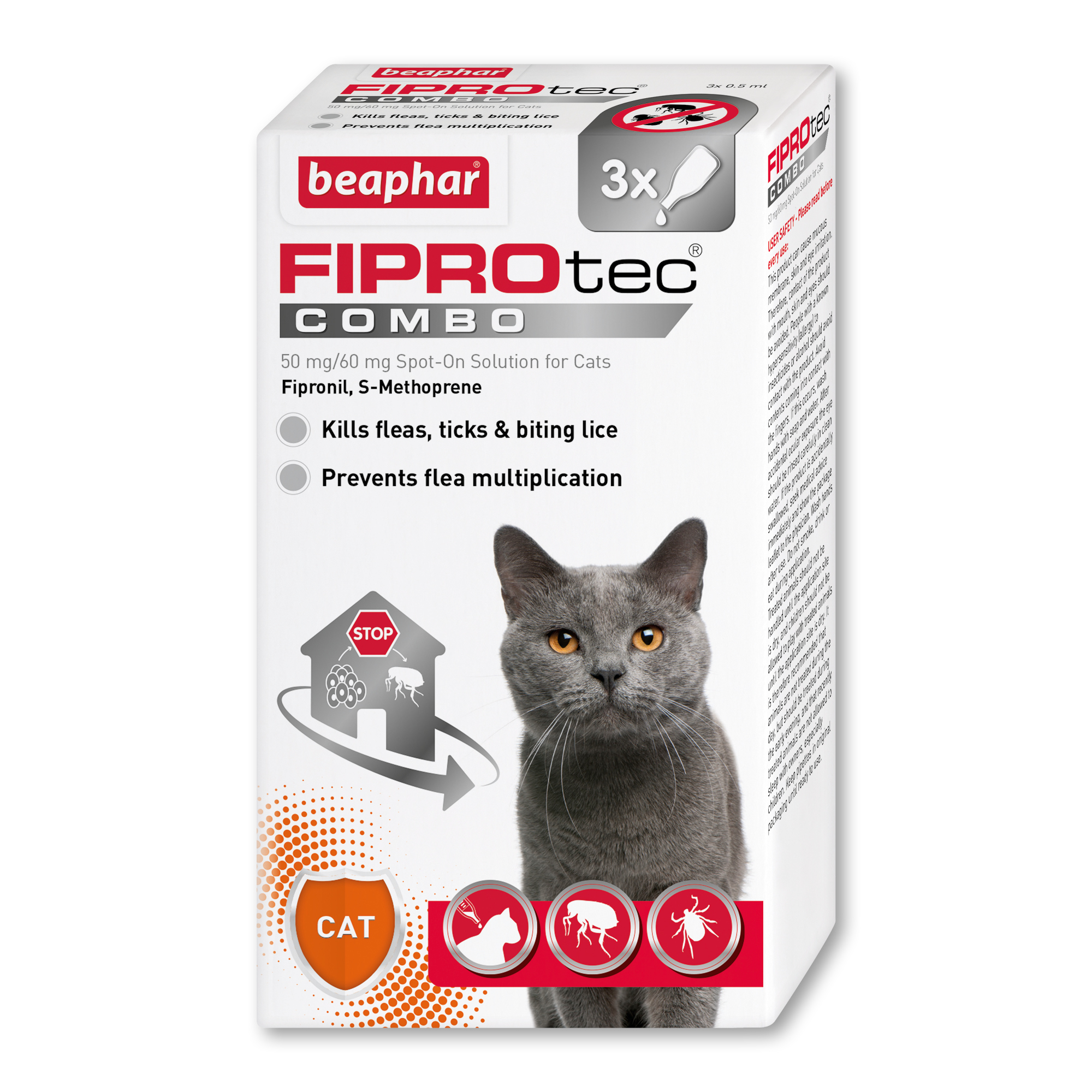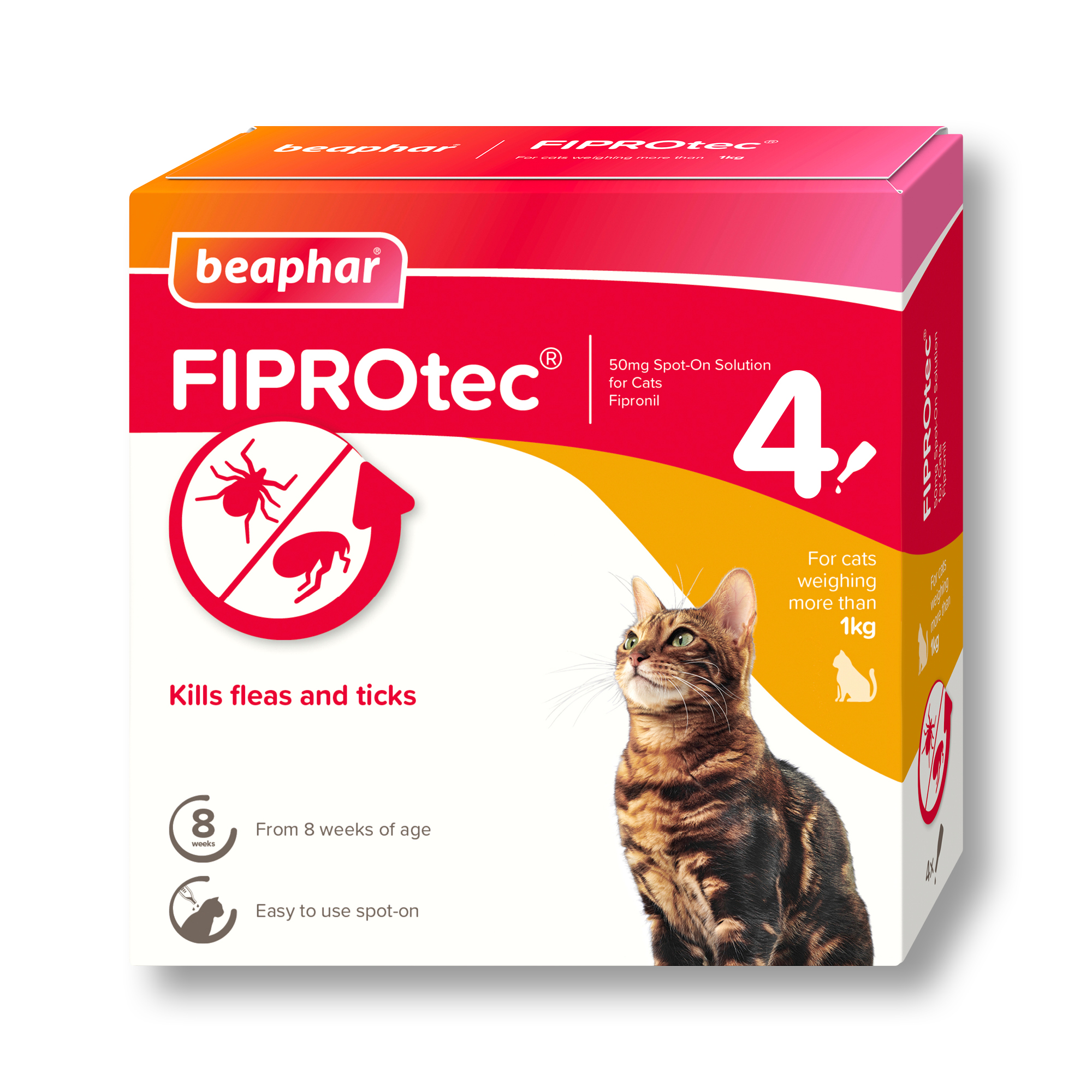How to protect your home from fleas
This blog focuses on preventing a home flea infestation.
Did you know, 95% of a flea infestation is in the home? The fleas on your pet are only 5% of the problem.
Most pet owners know to protect their cat or dog from fleas regularly. But, did you know you need to flea treat your home as well?
In the Beaphar office, the most common enquiry we get is ‘I’ve treated my pet for fleas, but it’s not working.’ But when asked if they’ve treated their home, the answer is generally ‘no’.
Why do I need to protect my home from fleas?
Some people believe that having a home flea infestation is a sign of a dirty or unclean house, but this is a myth.
Knowing how the flea life cycle works is a key part of understanding why you should be flea treating your home as your pet.
The fleas you see on your pet are the adult fleas. They jump onto your pet in order to feed and mate. One female flea can lay up to 50 eggs a day.
These flea eggs fall from your pet’s coat onto the floor, bedding or furniture. The eggs hatch into larvae, and crawl deep into warm, dark spaces like carpet or under skirting boards. Each larva spins itself into an impenetrable cocoon called a pupa, which protects the developing flea from all flea treatments. The pupa lays dormant, only hatching into an adult flea when a potential food source walks by, either animal or human.
In optimum conditions, the flea life cycle can be completed in 12–22 days! While treating your pet kills the adult fleas, any eggs already in the environment have the potential to develop into adult fleas. Once they’ve reached their adult stage, the fleas will jump onto your pet, and the cycle will begin all over again.
It can take 90 days or more to completely get rid of a flea infestation. Using a home flea treatment from the very start is much easier.
How do I protect my home from a flea infestation?
When it comes to choosing a home flea treatment, there are two methods to choose from:
Option 1: Use a combination, on-animal flea control product that contains an insecticide and an Insect Growth Regulator (IGR), such as Beaphar FIPROtec® COMBO. Combination flea treatments work on your pet and in your home, providing complete flea protection in one product.
Option 2: Use an on-animal flea control product that contains an insecticide, such as Beaphar FIPROtec® Spot-On, AND a household flea treatment that contains an insecticide and an IGR, such as Beaphar FLEAtec Household Flea Spray.
Flea control products that contain an IGR have a dual-action effect. The insecticide kills the adult fleas, while the IGR interrupts the flea life cycle, preventing the eggs and larvae from developing.
When an adult female flea comes into contact with an IGR, any eggs she lays will be unable to mature. Any eggs and larvae in the environment will also be affected by the IGR, and will be unable to develop further.
Using an IGR in your flea control routine prevents the flea life cycle from continuing. This stops a home flea infestation in its tracks.
⚠️Whichever method of flea prevention you use, it is essential that you repeat the treatment as directed on the product. Any gap in treatment can allow fleas to complete their life cycle, causing a home flea infestation to develop.⚠️
Do I need to flea treat my home in the winter?
Flea activity often reduces in the colder months but doesn’t stop completely, so you do need to flea treat your home and your pet all year round. Fleas multiply more quickly in warmer environments, and what do we do in the winter? We turn on our central heating.
This makes our homes the perfect environment for fleas. If there are any fleas lying dormant in your home or your pet brings fleas inside and you haven’t treated your home, you could find yourself fighting fleas when you least expect it.
What else can I do to protect my home from fleas?
Alongside using a suitable flea treatment, other things you can do to get rid of fleas in the home are:
- Wash your pet’s bedding and soft furnishings regularly. Do this at the hottest setting possible (a minimum of 60°C).
- Vacuum your home regularly. The vibrations encourage any flea pupae to hatch into adult fleas so they can be killed by the insecticides you’ve already used.
How do I treat an active flea infestation?
To treat an active flea infestation we recommend using an on-animal flea control product that contains an insecticide, such as Beaphar FIPROtec® Spot-On, and a household flea treatment that contains an insecticide and an IGR, such as Beaphar FLEAtec Household Flea Spray.
When choosing an on-animal flea treatment, make sure you choose one that is licenced to kill fleas. You know you have a licenced veterinary medicine because it will have a Vm number (veterinary medicine number) on the back of the pack.








